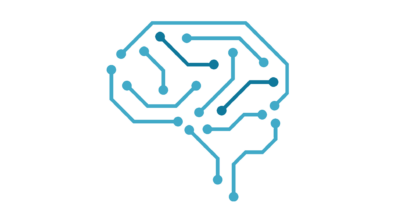Teamcenter Simulation SPDM – What’s your new year’s resolution for 2023?

What’s your new year’s resolution?
Mine is usually the same – get organized and work more efficiently!
You might think that ending up with the same new year’s resolution every year is suggestive of a failure to follow through with my commitments…. but here’s the excuse.
With each year that passes, there are better and more numerous ways available to improve efficiency in all aspects of our lives. There’s always more to be done! This year, it’s easy: start using the powerful new enhancements in the latest release of Teamcenter Simulation (based on Teamcenter 14.2 and Active Workspace 6.2).
That’s right, the overriding theme of this release is speed. Read on to learn how you can execute workflows more swiftly and collaborate more seamlessly than ever before.
Go faster and break down silos in 2023 with Teamcenter Simulation SPDM Software
A fundamental benefit of Simulation Process and Data Management (SPDM) software is providing complete visibility of all relevant input and output data to enable the right analysis to be done at the right time, and the results made available – to all stakeholders. This alone can be enough to make a significant impact on an organization’s productivity, but what else does it unlock, if done right?
We believe the added value is really to be found in leveraging that data more easily across domains of expertise and departments, automating tasks where possible and being able to quickly understand what has changed and how it impacts the analysis. What all this delivers is a better ROI on simulation and test activities, enabling them to have greater impact on driving better product performance.
So there we are – scene set. Drum roll……
The headlines
The top three enhancements in this release are listed below. Use the links to jump straight to each.
- A 2x faster workflow for MDAO analyses, eliminating any manual steps
- Easier access to simulation data for physical test engineers to compare simulation and test data
- Direct submission to HPC job schedulers using the tool launch framework
1. Set up and launch MDAO analyses 2x faster
Multi-disciplinary design analysis and optimization (MDAO) is all about streamlining and automating complex simulation processes so that they can be fully exploited for timely analysis and optimization. This is exactly the kind of value-add activity that a truly transformative SPDM solution allows you to scale and so we continue to strive for ever deeper integration between Teamcenter and HEEDS.
In this release of Teamcenter Simulation, you can now set up and launch MDAO analyses with HEEDS from Teamcenter Simulation more easily, and much more quickly. Thanks to a dedicated integration we now automatically capture new MDAO analysis objects as well as selecting inputs so that users can get their analysis running as quickly as possible. The bottom line – you can now do all of this in about half the time!
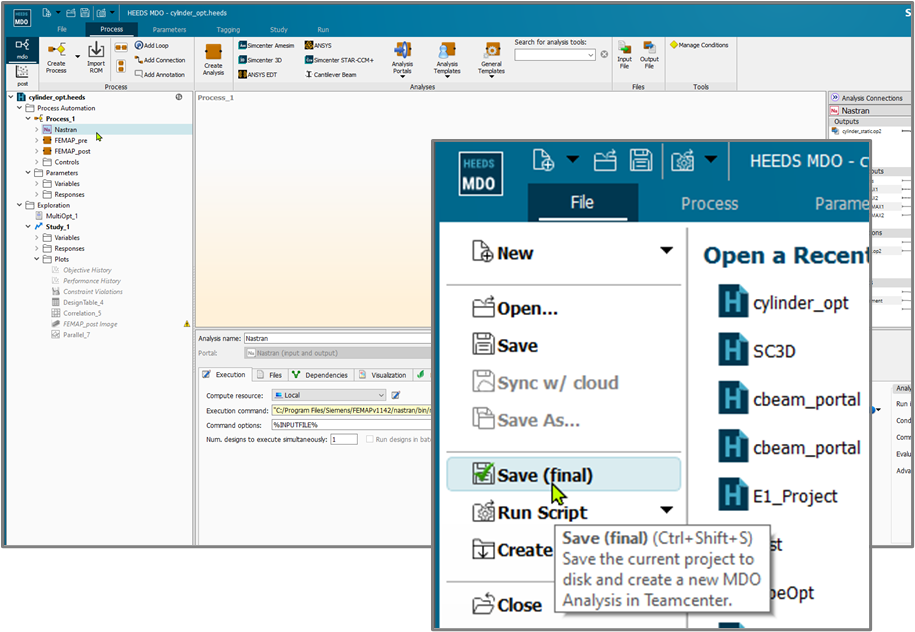
To help you build processes around MDAO with Teamcenter Simulation we have also introduced a fully automated way of exchanging tables of parameters between Teamcenter and HEEDS. You can now explicitly link variables and responses in HEEDS to Input and Output parameters in Teamcenter, with no need for manual steps in between.
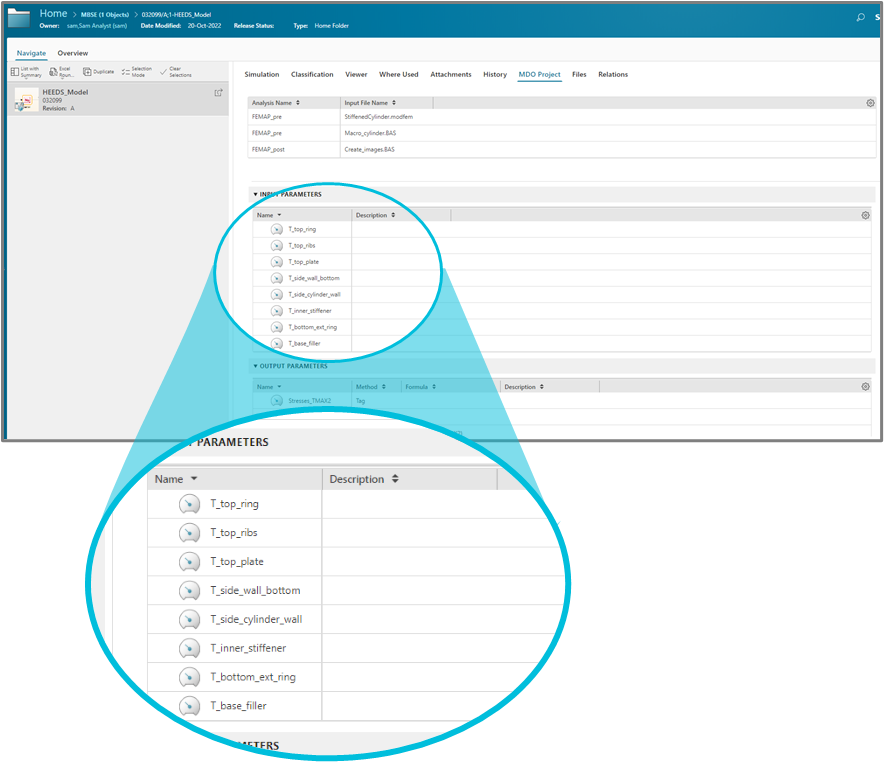
2. Easier access to simulation data for physical test correlation
Another way in which SPDM can transform productivity is by connecting engineering domains and enabling collaboration on the same datasets. In the last release, we introduced a dedicated environment for physical test engineers. This time, we have enabled new ways for physical test and simulation data to be connected and compared.
It all starts with giving better visibility on available results for a given product revision. The relation browser will now clearly show any relationship between simulation models, simulation results and physical test results. There are many good reasons to do this, the most important of which is to support model-based system testing. In this case, users of Simcenter Testlab will want to make sure they can quickly find back the Simcenter Amesim model they have been running during their test, and that’s exactly what they can now easily see in relationships.
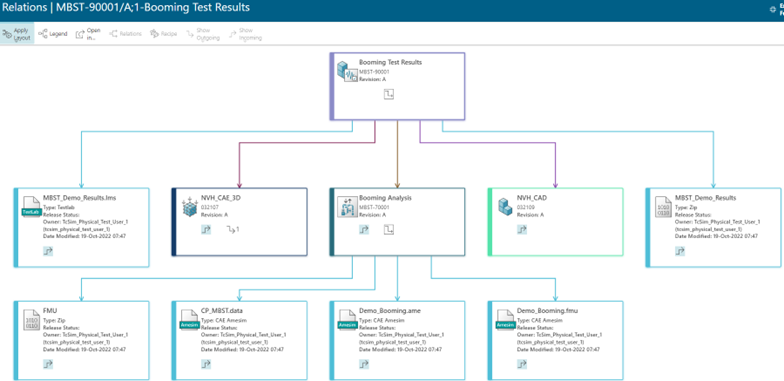
Comparing – or even correlating – results of physical testing and simulation can deliver deeper engineering insights. Therefore, when launching the Simcenter Testlab tool, any CAE 3D results which are already related to the physical test result object will be automatically downloaded as well so they are right there at the fingertips of the test engineer. Vice versa, CAE engineers can easily select available Simcenter Testlab result files in their Simcenter3D correlation application and make sure those data stay tightly connected with the CAE data to avoid any confusion and mistakes.
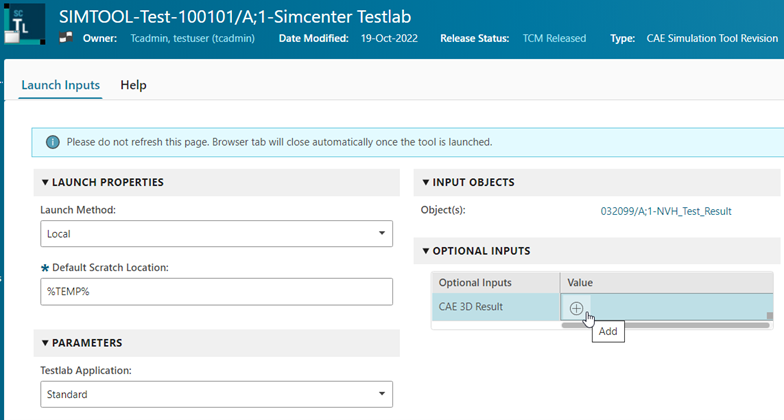
3. HPC configuration framework
Continuing the theme of “a need for speed”, we must say a few words about High Performance Computing (HPC). It’s also an area which has been streamlined in this release, with a new framework for storing and reusing HPC configurations. This means that all users can easily submit jobs to your HPC clusters without needing to perform any configuration.
Out-of-the-box configurations are included for commonly used job schedulers including PBS Pro, Slurm, LSF, SGE and ARC to get you up and running as quickly as possible.
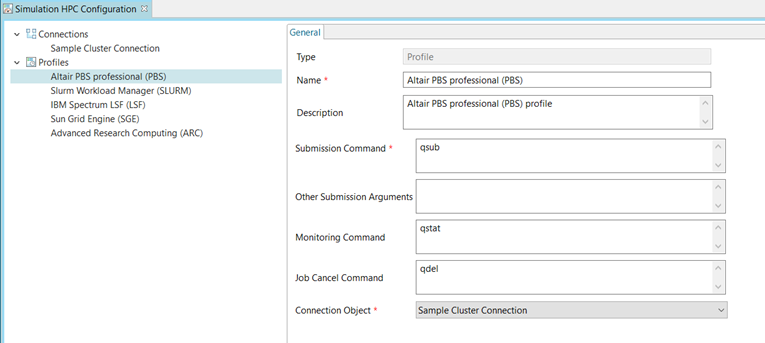
No excuses this time.
So there we have it – three ways to go faster using SPDM with Teamcenter Simulation in 2023. And three tools you can use to achieve ever greater transformation of design and engineering processes through embracing SPDM.
Teamcenter Simulation is an extension of the Teamcenter PLM system which manages simulation and test processes and data and integrates them into the digital thread of your products. You can read more about Teamcenter Simulation here, and head over to the Teamcenter blog to find out what else is new in Teamcenter 14.2.

